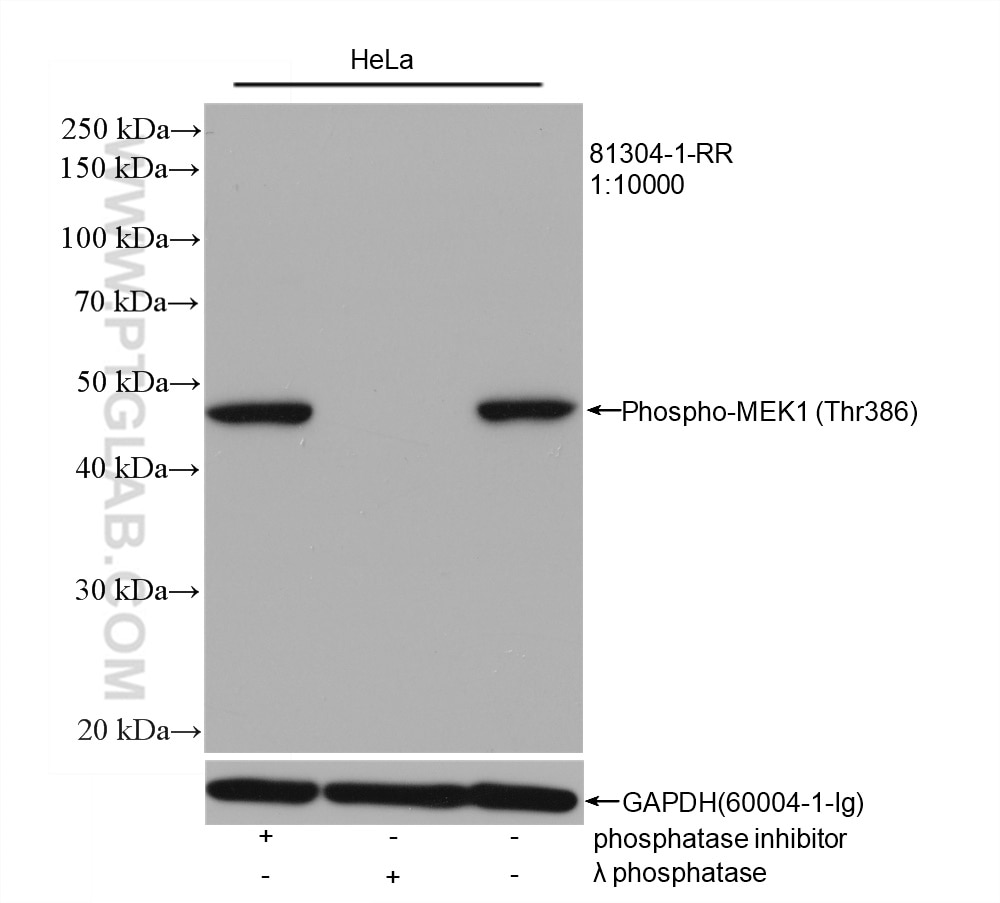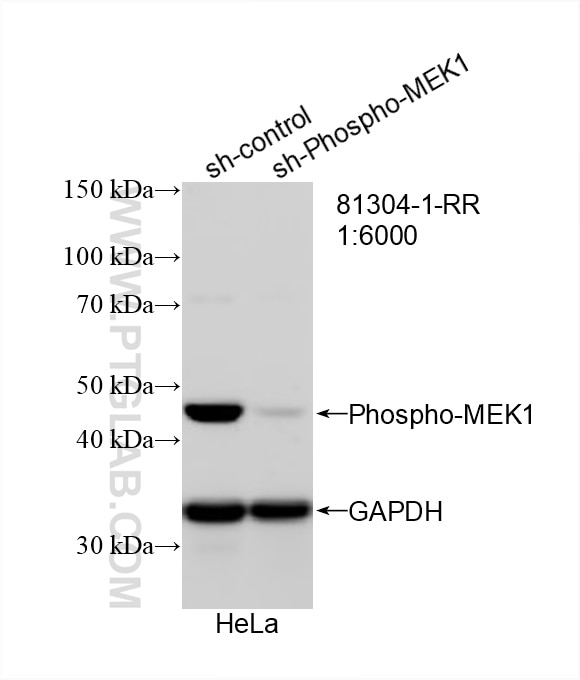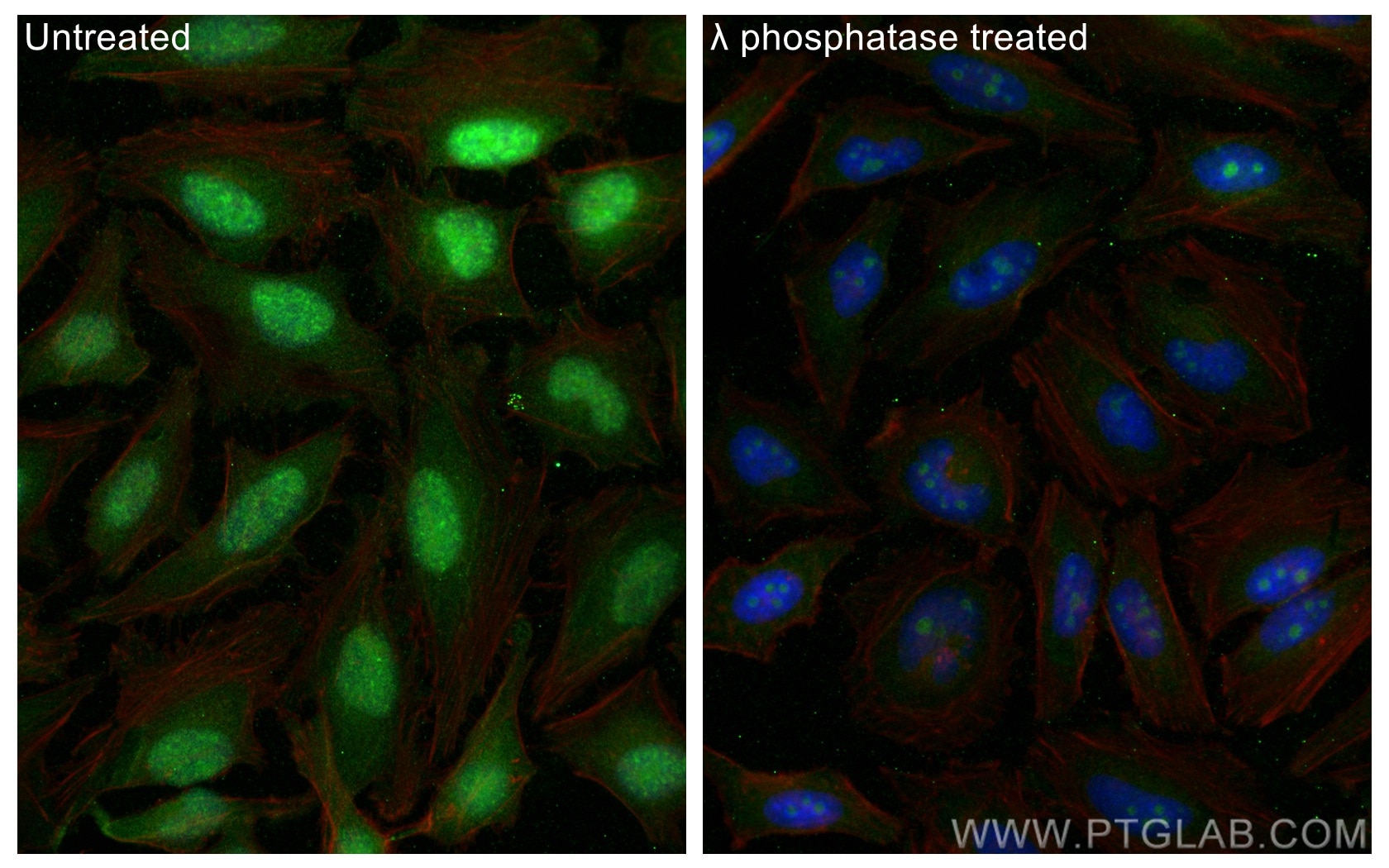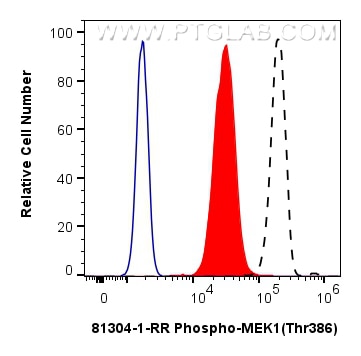Product Information
81304-1-PBS targets Phospho-MEK1 (Thr386) in WB, IF/ICC, FC (Intra), Indirect ELISA applications and shows reactivity with human samples.
| Tested Reactivity | human |
| Host / Isotype | Rabbit / IgG |
| Class | Recombinant |
| Type | Antibody |
| Immunogen |
Peptide Predict reactive species |
| Full Name | mitogen-activated protein kinase kinase 1 |
| Calculated Molecular Weight | 43 kDa |
| Observed Molecular Weight | 40-50 kDa |
| GenBank Accession Number | BC139729 |
| Gene Symbol | MEK1 |
| Gene ID (NCBI) | 5604 |
| ENSEMBL Gene ID | ENSG00000169032 |
| Conjugate | Unconjugated |
| Form | Liquid |
| Purification Method | Protein A purification |
| UNIPROT ID | Q02750 |
| Storage Buffer | PBS only, pH 7.3. |
| Storage Conditions | Store at -80°C. |
Background Information
MAP2K1 encodes MAPK1, also known as MEK1. MEK1 variants can enhance MEK1 expression and ERK1 phosphorylation that together lead to continuous activation of MEK/ERK signaling pathway. MEK1 bind directly to ERK2 through a region in the N terminus of MEK. In addition, a proline-rich (PR) regulatory sequence in MEK is also involved in MEK-ERK association and signal propagation. The coupling between MEK1 and ERK2 is enhanced through phosphorylation on S298 in the MEK1 PR region, whereas phosphorylation on MEK1 T292 releases the complex. MEK1 T292 is a substrate of ERK2, but the site is also phosphorylated at a basal level when ERK2 is inhibited, suggesting several regulators of this site . Although the S298 site in MEK2 has been conserved, it lacks the T292 phosphorylation site, and it is not a substrate of PAK1. (PMID: 31972311, PMID: 17928366, PMID: 22177953)










